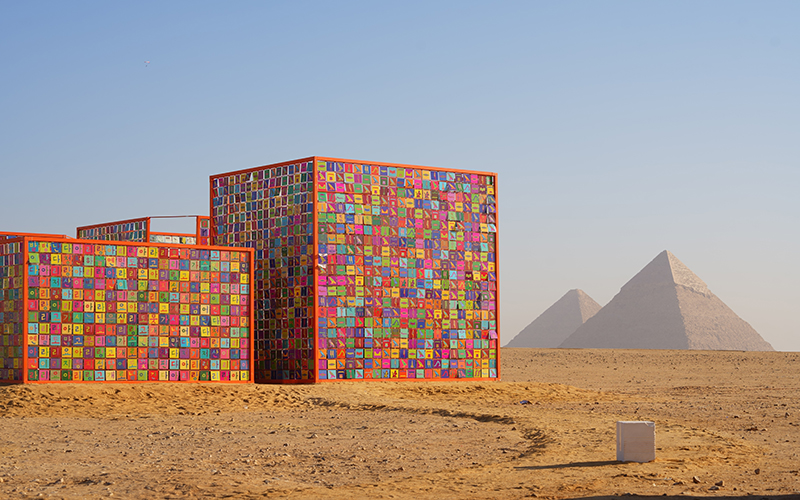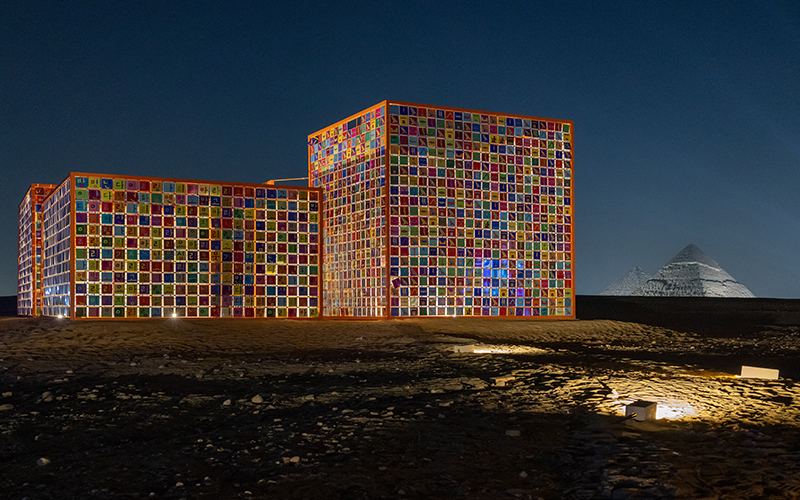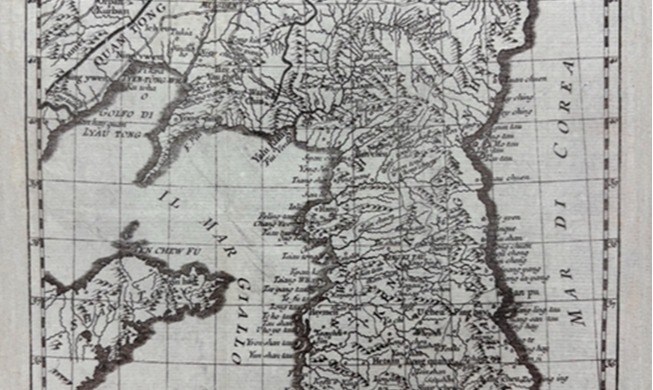- 한국어
- English
- 日本語
- 中文
- العربية
- Español
- Français
- Deutsch
- Pусский
- Tiếng Việt
- Indonesian
By Honorary Reporters Esraa Elzeny and Salwa Elzeny from Egypt
Photo by = Art D'Egypte
The exhibition "Forever is Now" is now in its fourth edition at the site of the Pyramids of Giza, featuring the works of 12 international artists.
At the event, the New York-based visual artist Kang Ik-joong presents his installation work "The Four Temples," which is decorated in Korean, English, Arabic and hieroglyphics and each displays translations of the folk song "Arirang."
Known abroad for large-scale public art projects using 3-by-3 inch canvases, Kang is known for works at the United Nations in New York as well as those in London and Madrid.
The following are excerpts from an email interview with Kang from Oct. 22 to Nov. 13.

"The Four Temples" at the Pyramids of Giza
How does it feel to display your art in front of the Pyramids of Giza in Egypt?
I feel humbled like a tiny speck of dust in front of these amazing pyramids. It's not just an honor but a deeply spiritual experience.
What are you trying to convey through this multilingual approach toward art?
The Four Temples are buildings of different sizes, each with one of four languages on the outside. Inside are 5,016 drawings by people like children from Egypt and refugees from North Korea during and after the Korean War.
I consider the pyramid a symbol of the past, the drawings as symbols of the future and the languages on the buildings as symbols of the present. The pyramid's triangular shape stands for humanity, while the rectangular shape represents the land. The sun and moon above the pyramid symbolize the heavens, and when the moon is full, the connection linking these three elements feels even more powerful.

From left to right at the exhibition "Forever Is Now" are Ambassador to Egypt Kim Yong-hyun and his wife, exhibition founder Nadine Abdel Ghaffar and artist Kang Ik-joong.
What responses have you received from Egyptians to your work?
I was really surprised by the amazing feedback from the Egyptian audience. I was shocked by how many students spoke fluent Korean and how much Egyptians love Korean pop culture. One of my goals is to encourage deeper cultural exchange beyond just TV shows and music.

Nighttime photo of "The Four Temples"
How did the Giza Plateau's terrain affect your work for "The Four Temples?"
I've learned the importance of respecting the power of nature. Building in the desert is difficult because of strong winds and intense sun. Instead of trying to fight these elements, I decided to work with them. My goal was to transform the desert into a place where people could experience art in a new way.
One idea was to let individual drawings sway in the wind, catching the sunlight as they moved. I also wanted to create a space that felt like an oasis, where people could gather and find shelter from the harsh environment.
Any final message to Egyptians who have seen your piece?
I've always thought of life as a train ride. We get on and off at different stops, meet new people and sometimes bid farewell to old ones. Our latest stop, "The Four Temples," has brought together wonderful people who share a dream of peace and harmony.
[email protected]
*This article is written by a Korea.net Honorary Reporter. Our group of Honorary Reporters are from all around the world, and they share with Korea.net their love and passion for all things Korean.
